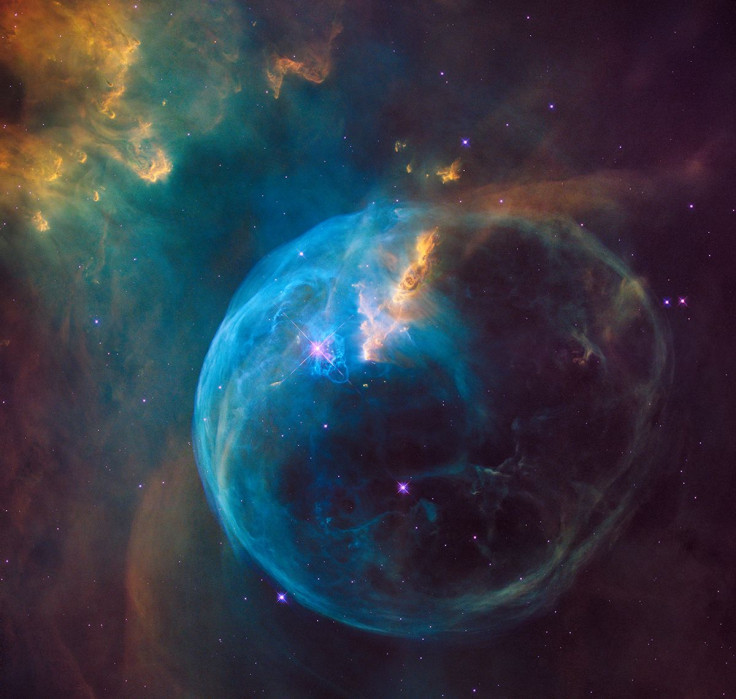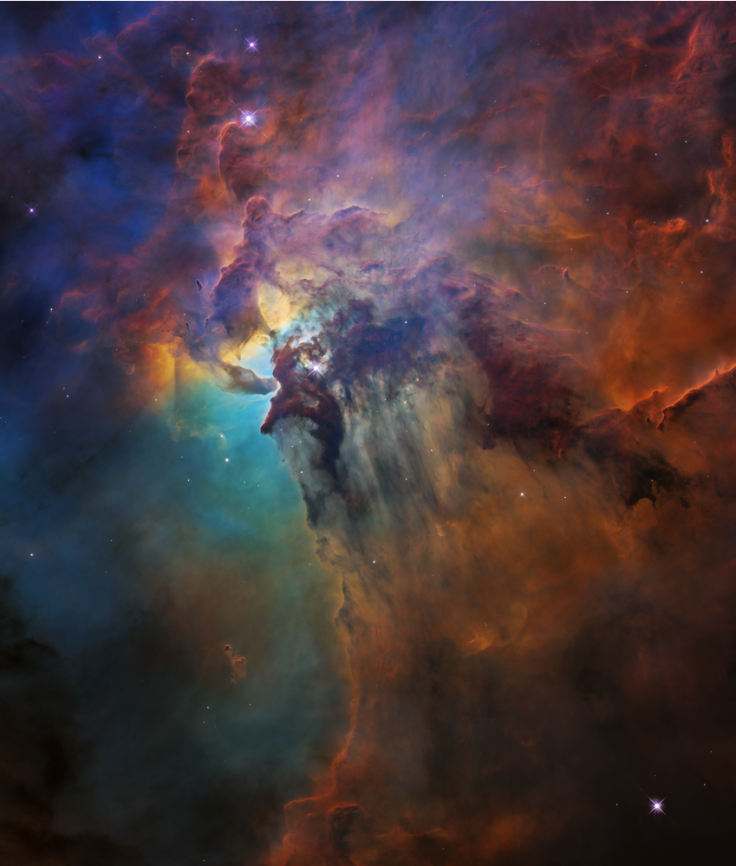NASA's Hubble Captures Stunning Swan Nebula Thousands Of Light-Years Away [PHOTO]

The stunning Swan Nebula was imaged by the NASA/ESA Hubble Space Telescope over a decade. And the U.S. space agency recently brought back the photo that provides a rare glimpse of the stellar nursery thousands of light-years away.
On the official Hubble Twitter page, NASA shared an image of the Swan Nebula, also known as the Omega Nebula, that was first released to the public in 2003 to mark the telescope's 13th anniversary since its launch. The nebula, which was given the designation M17, is located about 5,500 light-years away from Earth in the constellation Sagittarius (the Archer).
The Hubble image, which was colored to differentiate the various gases in the nebula, shows a central portion of M17. The oxygen is colored green, hydrogen and infrared light show up as red in the photo, according to the photo description.
This #HubbleClassic shows ripples of glowing gas in a stellar nursery called the Omega or Swan Nebula. Also known as M17, the nebula is ~5,500 light-years away in the constellation Sagittarius. This image was released in 2003 for Hubble's 13th anniversary: https://t.co/S8teAD3JML pic.twitter.com/618DYwJUFr
— Hubble (@NASAHubble) April 29, 2019
Near the bottom of the image is a pocket of cold gas wherein new stars are born that is around 10 times bigger than our solar system. It can be found in the center of the brightest region of the Swan Nebula. At the bottom-left corner of the photo are dark features that were created by other dense pockets of gas.
Swiss astronomer Jean-Philippe Loys de Chéseaux first observed the Swan Nebula in the night sky in 1745. The nebula, which was discovered to be one of the largest star-forming regions in the Milky Way Galaxy, has an apparent magnitude of 6. Skygazers everywhere can see the nebula for themselves as it can be observed even with only a pair of binoculars.
The Omega Nebula is also home to one of the Milky Way's youngest star clusters, which has only been around for about 1 million years. However, even the most powerful telescopes can't catch a glimpse of the young stars within the cluster due to the massive amounts of gas and dust obscuring them from sight.
Aside from the image of the Omega Nebula, the Hubble telescope also snapped a photo of the globular cluster Messier 75.
#HubbleFriday This sparkling burst of stars is Messier 75. It is a globular cluster: a spherical collection of stars bound together by gravity. Clusters like this orbit around galaxies and typically reside in their outer and less-crowded areas: https://t.co/roDC2dowZy pic.twitter.com/hHB92zYzL7
— Hubble (@NASAHubble) April 26, 2019
Described as a "sparkling burst of stars," Messier 75 can also be found in the constellation of Sagittarius, though it is much farther away from Earth than the Swan Nebula at a distance of around 67,000 light-years.
The globular cluster, which is defined as a "spherical collection of stars bound together by gravity," contains about 400,000 stars, most of which reside in its center. Though it was discovered in 1780 by Pierre Méchain, French astronomer Charles Messier later added it to his "Catalogue of Nebulae and Star Clusters," which contains 110 astronomical objects.

© Copyright IBTimes 2025. All rights reserved.





















